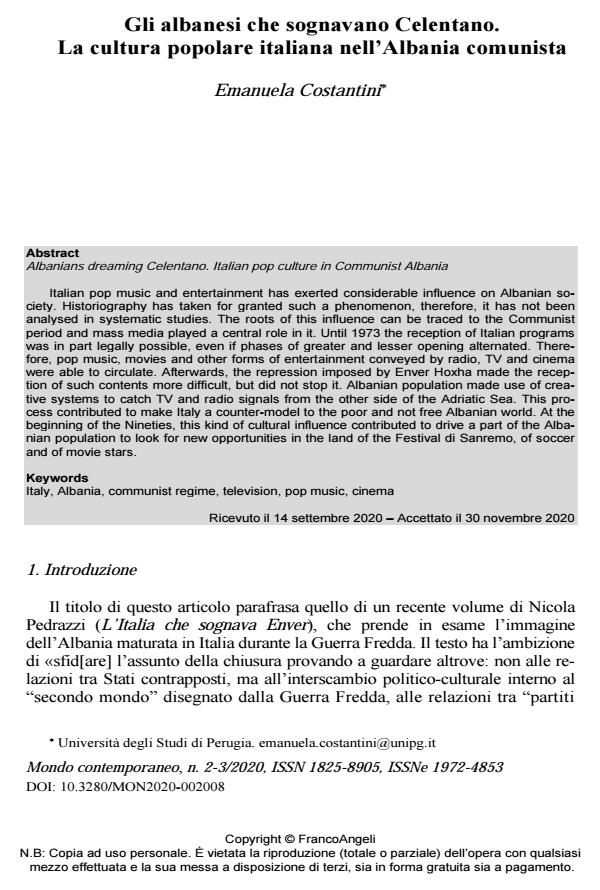Albanians dreaming Celentano. Italian pop culture in Communist Albania
Journal title MONDO CONTEMPORANEO
Author/s Emanuela Costantini
Publishing Year 2021 Issue 2020/2-3
Language Italian Pages 17 P. 153-169 File size 272 KB
DOI 10.3280/MON2020-002008
DOI is like a bar code for intellectual property: to have more infomation
click here
Below, you can see the article first page
If you want to buy this article in PDF format, you can do it, following the instructions to buy download credits

FrancoAngeli is member of Publishers International Linking Association, Inc (PILA), a not-for-profit association which run the CrossRef service enabling links to and from online scholarly content.
Italian pop music and entertainment has exerted considerable influence on Albani-an society. Historiography has taken for granted such a phenomenon, therefore, it has not been analysed in systematic studies. The roots of this influence can be traced to the Communist period and mass media played a central role in it. Until 1973 the recep-tion of Italian programs was in part legally possible, even if phases of greater and lesser opening alternated. Therefore, pop music, movies and other forms of entertain-ment conveyed by radio, TV and cinema were able to circulate. Afterwards, the repres-sion imposed by Enver Hoxha made the reception of such contents more difficult, but did not stop it. Albanian population made use of creative systems to catch TV and ra-dio signals from the other side of the Adriatic Sea. This process contributed to make Italy a counter-model to the poor and not free Albanian world. At the beginning of the Nineties, this kind of cultural influence contributed to drive a part of the Albanian popu-lation to look for new opportunities in the land of the Festival di Sanremo, of soccer and of movie stars.
Keywords: Italy, Albania, communist regime, television, pop music, cinema
Emanuela Costantini, Gli albanesi che sognavano Celentano. La cultura popolare italiana nell’Albania comunista in "MONDO CONTEMPORANEO" 2-3/2020, pp 153-169, DOI: 10.3280/MON2020-002008